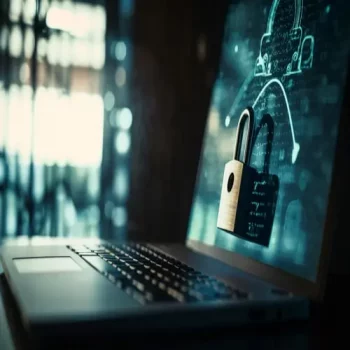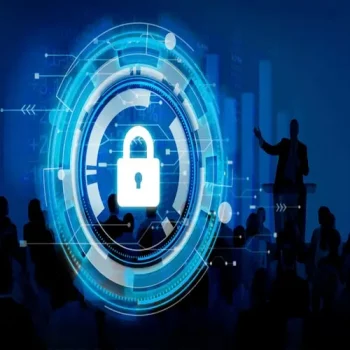ITSOFT Can Setup up Your Network Stability and Cybersecurity For Your Network; your company will be safer than ever before.
In the era of rapid technological advancements and unprecedented interconnectedness, the world has witnessed remarkable progress, making tasks more convenient and efficient. However, this digital revolution has also given rise to a concerning surge in cyber threats and information breaches. According to multiple reports, the average cost of an information breach has reached alarming heights, emphasizing the urgent need for organizations to strengthen their cybersecurity measures. The ever-evolving cyber landscape demands a proactive approach to network security to safeguard valuable data and maintain the trust of clients.
A basic introduction of Cybersecurity
Cybersecurity is a complex field that involves various measures to protect networks, systems, and data from cyber threats. One essential aspect is network penetration testing, which identifies vulnerabilities in a system before malicious actors can exploit them. Additionally, cloud security plays a crucial role in designing secure cloud architectures and applications, mitigating potential risks associated with cloud service providers.
The four features or phases of Cybersecurity principles
Govern:
Governance in cybersecurity refers to the process of identifying, assessing, and managing security risks across an organization. It involves developing and implementing policies, procedures, and guidelines to guide the organization’s cybersecurity efforts. Key aspects of the “Govern” function include:

- Risk Assessment: Identifying potential vulnerabilities and threats to the organization’s IT infrastructure, applications, and data. This involves conducting regular risk assessments and vulnerability assessments to understand the security posture and potential weaknesses.
- Policy Development: Establishing a set of cybersecurity policies that outline the organization’s security objectives, standards, and rules. It should cover aspects, such as access control, data handling, password management, and incident response.
- Compliance: Ensuring that the organization complies with relevant cybersecurity regulations, industry standards, and legal requirements. This may include data protection laws, industry-specific regulations, and international cybersecurity standards.
- Security Awareness and Training: Educating employees about cybersecurity best practices and potential risks. Training programs help in cultivating a security-conscious culture within the organization and empower employees to recognize and respond to cyber threats effectively.
Protect:
The “Protect” function focuses on implementing various controls and measures to reduce security risks and prevent cyberattacks. It involves deploying security technologies, practices, and protocols to safeguard the organization’s assets. The key aspects are:
- Access Control: Implementing authentication and authorization mechanisms to ensure that only authorized users have access to sensitive data and resources.
- Encryption: Applying strong encryption algorithms to protect data both during transmission and while at rest. Encryption makes it challenging for unauthorized parties to read or modify the information.
- Firewalls and Intrusion Prevention Systems (IPS): Installing firewalls and IPS to monitor network traffic, block unauthorized access attempts, and detect and prevent malicious activities.
- Antivirus and Anti-Malware Software: Deploying security software to detect and remove viruses, malware, and other malicious software from systems and devices.
Detect:
The “Detect” function involves continuous monitoring and vigilant surveillance to identify potential cyber threats and security incidents. Early detection enables organizations to respond promptly and mitigate the impact of cyberattacks. Key aspects of the “Detect” function include:
- Security Information and Event Management (SIEM): Implementing SIEM solutions to collect and analyze security event logs from various sources. SIEM helps in identifying patterns and anomalies that may indicate a potential security breach.
- Intrusion Detection Systems (IDS) and Intrusion Prevention Systems (IPS): Utilizing IDS and IPS to monitor network traffic and detect suspicious activities or potential cyberattacks.
- Threat Intelligence: Leveraging threat intelligence services and feeds to stay updated on the latest cyber threats and trends. This information aids in proactively identifying potential risks and vulnerabilities.
Respond:
The “Respond” function involves having a well-defined incident response plan and the capability to effectively handle and mitigate cybersecurity incidents when they occur. Key aspects of the “Respond” function include:
- Incident Response Plan: Developing a comprehensive incident response plan that outlines the roles, responsibilities, and steps to be taken in case of a security incident. The plan should cover containment, eradication, recovery, and lessons learned.
- Cybersecurity Incident Management: Establishing a dedicated incident response team or appointing incident handlers responsible for managing and coordinating responses to cybersecurity incidents.
- Communication and Reporting: Promptly communicating with relevant stakeholders, such as management, employees, customers, and regulatory authorities, about the incident and the actions being taken to address it.
- Forensics and Analysis: Conducting forensic analysis to understand the root cause of the incident and identify any further risks or potential breaches.

Factors to consider for establishing a robust cybersecurity framework within your organization
- Problem-Solving Skills: The ability to tackle complex security challenges and respond to incidents effectively.
- Technical Aptitude: A solid understanding of cybersecurity technologies and practices.
- Knowledge of Security across Various Platforms: Awareness of security protocols for different devices and platforms.
- Attention to Detail: A meticulous approach to identifying and addressing potential vulnerabilities.
- Communication Skills: The capacity to convey security issues and policies to all relevant stakeholders.
- Fundamental Computer Forensics Skills: Understanding how to investigate cyber incidents and gather evidence.
- A Desire to Learn: Staying updated on the latest cyber threats and security best practices.
- An Understanding of Hacking: Gaining insight into the methods attackers uses to exploit vulnerabilities.
Contact ITSOFT to set up your network stability and cybersecurity for the same
In this digital era, the importance of network security cannot be denied. The increasing cost of information breaches underscores the need for organizations to prioritize cybersecurity and protect their critical data and clients.
Oklahoma-based ITSOFT offers comprehensive network stability and cybersecurity services to ensure organizations stay safe from the ever-evolving cyber threats. By following the main principles of network security and being vigilant against emerging cyber risks, organizations can safeguard their future and thrive in the digital landscape.


